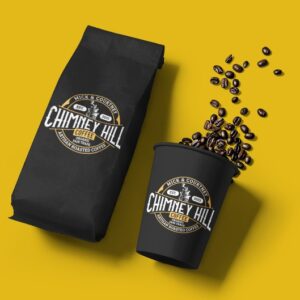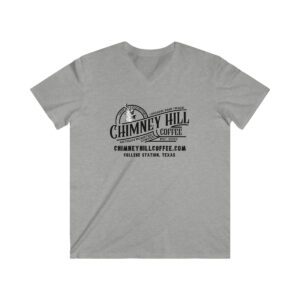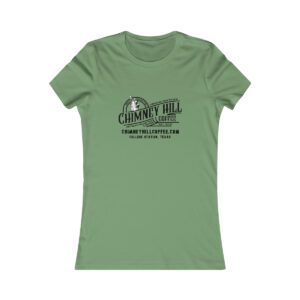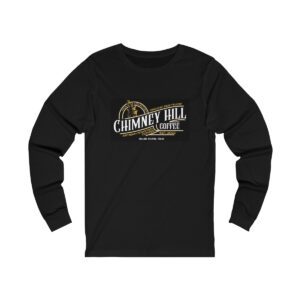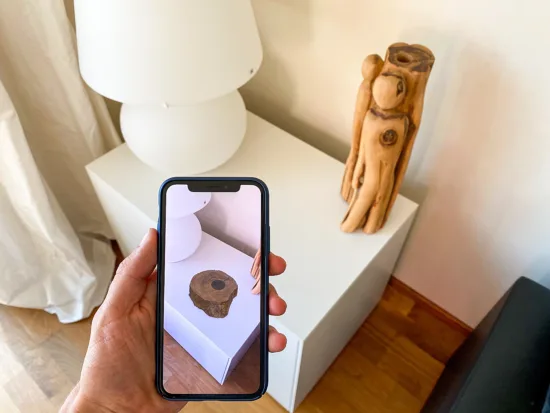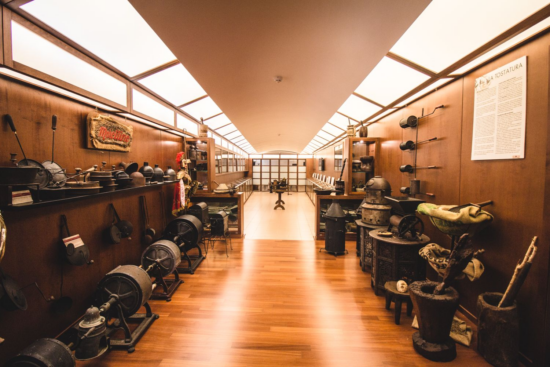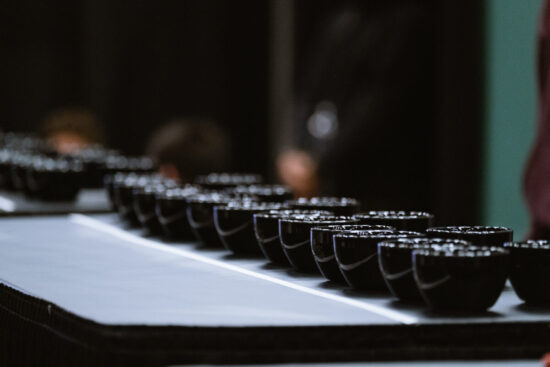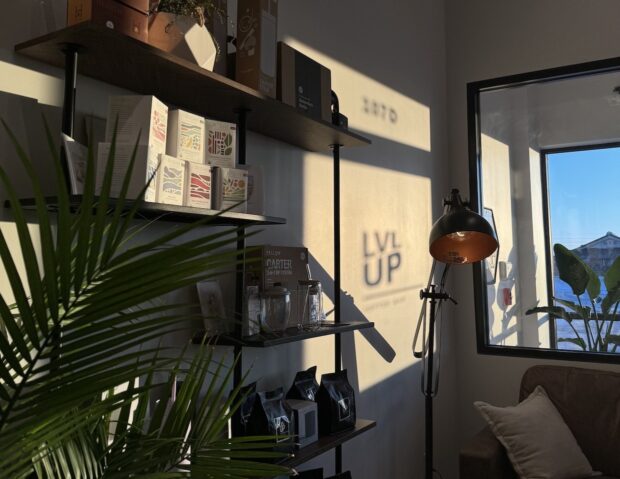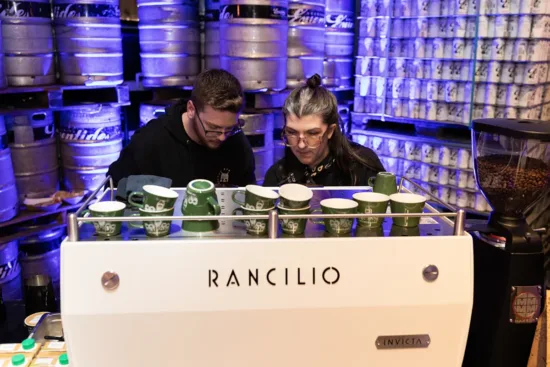The most affordable Keurig coffee maker is available exclusively at Walmart and comes at a sweet price of only $59.00. In this article, you’ll find out how good it really is, and also find additional information like how to clean it, or do you need a water...
Mastering the Grind: How to Grind Coffee Beans for a Perfect Brew
Mastering the Grind: How to Grind Coffee Beans for a Perfect Brew
Mastering the Grind: How to Grind Coffee Beans for a Perfect Brew
Mastering the Grind: How to Grind Coffee Beans for a Perfect Brew
Mastering the Grind: How to Grind Coffee Beans for a Perfect Brew
Mastering the Grind: How to Grind Coffee Beans for a Perfect Brew
Quick French Press Iced Coffee (No, It’s Not Cold Brew)
This is the absolute fastest way to make French press iced coffee. Just forget about cold brew concentrate – with this Quick French Press Iced Coffee Recipe you can have your iced coffee ready in 5 – 6 minutes. Who doesn’t like the French press?! It’s...
Here’s How to Change Keurig 2.0 Water Filter Easily
Not sure how to change Keurig 2.0 water filter? Here are step-by-step instructions that will help you do it quickly and easily. Keurig water filter should be changed every 2 months or 60 tank refills. The water filter is located inside the water tank, on the valve at...
The coffee rose for assessing Anaerobic coffee
I just came across this really neat tool to assess anaerobic coffees. I haven't used it for cupping yet. I'm not sure I will like it either because the idea of lowering the score of the coffee just because it tastes has some thyme flavors. At the same time I...
Three US Coffee Championship Events Are Heading To Rancho Cucamonga
This article is from the coffee website Sprudge at http://sprudge.com. This is the RSS feed version. The 2024 US Barista Championship, Brewers Cup, and Cup Tasters will take place March 15-17 at Klatch Coffee Roasters in Rancho Cucamonga, California.
The Origin Story of Turtle Island Coffee in Vancouver, B.C.
A new Indigenous-owned coffee company based in Vancouver, British Columbia, called Turtle Island Coffee has launched with the goal of exposing more people to high quality specialty coffee and Indigenous...
Get Ready for The Barista League’s 2024 Season
The Barista League has announced 12 competitions across four continents. BY J. MARIE CARLANBARISTA MAGAZINE ONLINE Photos courtesy of The Barista League When The Barista…
Get Ready for The Barista League’s 2024 Season
The Barista League has announced 12 competitions across four continents. BY J. MARIE CARLANBARISTA MAGAZINE ONLINE Photos courtesy of The Barista League When The Barista…
Get Ready for The Barista League’s 2024 Season
The Barista League has announced 12 competitions across four continents. BY J. MARIE CARLANBARISTA MAGAZINE ONLINE Photos courtesy of The Barista League When The Barista League announces new events, it’s worth paying attention! This year, the schedule will be...
Weekly Coffee News: EUDR and Africa + More Celebrity Coffee
Welcome to DCN’s Weekly Coffee News. Keep up with all the latest coffee industry stories and career opportunities by subscribing to DCN’s newsletter. Tell our editors about your news here. Report: Small-Scale Farmers in...
Do Higher Coffee Prices Mean More Money For Farmers? A Story From Sumatra Shows It’s Complicated
This article is from the coffee website Sprudge at http://sprudge.com. This is the RSS feed version. Since coffee costs more now than ever, do those coffee prices impact the amount of money earned by coffee farmers?
Coffee News Recap, 2 Feb: Applications open for Australia’s Richest Barista 2024, De’Longhi reports 4.6% revenue increase after La Marzocco move & other stories
Every Friday, Perfect Daily Grind rounds up the top coffee industry news from the previous week. Here are this week’s coffee news stories. The word of the week is: expansion. Mon, 29 Jan AeroPress launches limited-edition Clear Pink brewer. The coffee brewer is made...
Watch The 8 Best Coffee Videos Vying For Sprudgie Awards
This article is from the coffee website Sprudge at http://sprudge.com. This is the RSS feed version. The best coffee videos from 2023 featuring Cafe Imports, Aramse, Nguyen Coffee Supply, Wildly, Mirror Coffee Roasters, Alto Stories, Quek Shio, and Cafe Retiro.
Robusta is great and has untapped potential
I live in the US and my typical choice of coffee is lightly roasted Ethiopian pour overs. I generally love acidity and fruit flavors in my coffee. My experience with Robusta has often been poor. Very dark, roasty and maybe chocolatey. I participated in the Hoffman...
Design Details: Brewing Reinvented at ULA Café in Melbourne
Welcome to Design Details, an ongoing editorial feature in Daily Coffee News focused on individual examples of coffee shop architecture, interior design, packaging design or branding. If you are a coffee...
Robert Downey Jr.’s New “Happy Coffee” Is Really Depressing
This article is from the coffee website Sprudge at http://sprudge.com. This is the RSS feed version. Robert Downey Jr. and Craig Dubitsky team up for Happy Coffee.
Out Now: The February + March 2024 Issue of Barista Magazine!
In our new issue we feature Lisa Lawson from Glasgow, Scotland, take a look at the newest grinders, explore spring drink inspiration, see how more women are getting involved in coffee tech, and much more! BY SARAH ALLENBARISTA MAGAZINE We’re stoked to announce the...
The coffee industry’s biggest competition: The story of the World Barista Championship
Every year, the global coffee industry gears up for one of its most exciting and groundbreaking competitions: the World Barista Championship. For more than two decades, the WBC has been one of the biggest catalysts for change and innovation in specialty coffee, and...
The 2023 Specialty Coffee Transaction Guide Has Landed
The 2023 edition of the Specialty Coffee Transaction Guide (SCTG) guide went live today, providing actors throughout the coffee chain a data-driven tool for green coffee price discovery. The full...
Espro great until I needed replacement filter ☹️
I've had an Espro P7 for nearly four years after seeing glowing praise on this sub (to which I later contributed). Before I bought the P7 I looked at the replacement parts available and they seemed like a solid company in that they sold e.g. replacement filters...
New Bill Requires More Kona In Your Kona Coffee
This article is from the coffee website Sprudge at http://sprudge.com. This is the RSS feed version. Currently a coffee only need to be 10% Kona to be labeled as such.
What’s the best and worst part about owning and running a coffee shop?
I'm not interested in getting into it myself, as I have no experience in the service industry, no real appetite for risk and no desire to run a business in general. But sometimes I think about it and I wonder what's the most enjoyable thing about it and...
minimum dose size?
I use the Hario switch to brew my coffee and am trying to reduce my caffeine consumption. Hence I would like to brew smaller cups of coffee. I am currently using 10g of coffee with 160g of water. (1:16 Ratio) I am wondering if there is a minimum amount of coffee...
[CAFE OWNERS] Background before starting a shop?
I’ve worked in coffee for 6 yrs as a barista and shift supervisor and have passion for it. I’ve decided that I want to open my own place in the future and so I’ve been doing the research to make a business plan. Lately, however, I’ve begun to realize just how many...
Mastering the Grind: How to Grind Coffee Beans for a Perfect Brew
Introduction
The Essence of Coffee Grinding
Welcome to the world of coffee grinding, where the journey to a perfect cup begins! If you’re wondering how to grind coffee beans, you’ve come to the right place. Grinding your own beans is the key to unlocking the freshest, most flavorful coffee experience possible. In this comprehensive guide, we’ll walk you through everything from the basics of coffee beans to the nitty-gritty of grinding techniques. Whether you’re a seasoned coffee aficionado or just starting to explore the depths of home brewing, this guide is your gateway to elevating your coffee game. So, let’s start this aromatic journey and dive into the art of grinding coffee beans!
Why Grinding Matters: More Than Just a Step
The first sip of a freshly brewed coffee is more than just a drink; it’s an experience. The aroma, the flavor, the warmth – all start with how you grind your coffee beans. This seemingly simple step is crucial in determining the taste and quality of your coffee. But fear not, mastering the art of coffee grinding isn’t as daunting as it might seem. With the right knowledge and tools, you can transform your coffee routine into an extraordinary sensory adventure.
Grinding coffee beans is about breaking down the beans into small particles to extract the maximum flavor during brewing. The size and consistency of the grind are pivotal. Too fine, and you risk a bitter, over-extracted brew; too coarse, and you’ll end up with a weak, underwhelming cup. It’s all about finding that sweet spot, which varies depending on your brewing method – be it a robust espresso or a delicate pour-over.
Freshness in Every Cup: The Perks of Home Grinding
But why grind your own beans, you might ask? Pre-ground coffee may seem convenient, but it comes at a cost – the loss of flavor and aroma. Coffee begins to lose its freshness almost immediately after grinding, leading to a stale and flat taste. By grinding your beans right before brewing, you ensure the freshest, most vibrant cup of coffee possible.
As we delve deeper into the world of coffee grinding, we’ll cover everything from the types of coffee grinders to grinding techniques for different brewing methods. We’ll share tips and tricks to achieve the perfect grind every time, and even touch on grinder maintenance to keep your equipment in top shape. So, whether you’re a beginner or looking to refine your grinding skills, this guide has got you covered.
Remember, great coffee is no accident. It’s a craft, honed with care and knowledge. And it all starts here, with grinding your beans. So let’s embrace the journey and transform your coffee routine into an art form. Stay tuned as we explore the ins and outs of how to grind coffee beans for that perfect cup of coffee.
Types of Coffee Grinders: Choosing Your Perfect Match
Burr vs Blade Grinders: The Great Debate
When it comes to grinding coffee beans, the type of grinder you use can make all the difference. The two main contenders in the coffee grinding world are burr grinders and blade grinders, each with its own set of pros and cons.
Blade Grinders
These grinders use a blade that spins at high speed to chop the beans. They’re generally more affordable and compact, making them a great choice for casual coffee drinkers or those just starting out. However, blade grinders can be inconsistent, often resulting in uneven grind sizes. This inconsistency can lead to uneven extraction, where some coffee particles are over-extracted while others are under-extracted, affecting the overall taste of your brew.
Burr Grinders
In contrast, burr grinders crush beans between two abrasive surfaces (burrs). These grinders offer a more consistent grind size, which is crucial for brewing a balanced and flavorful cup of coffee. Burr grinders come in two types: flat burr and conical burr. Flat burr grinders provide an extremely consistent grind but can be pricier and noisier. Conical burr grinders are quieter and less expensive but might produce a slightly less consistent grind. Regardless, both types of burr grinders are favored by coffee enthusiasts for their precision and quality.
Manual vs Electric Grinders: Convenience or Control?
Another aspect to consider is whether to go for a manual or electric grinder.
Manual Grinders
These are perfect for those who enjoy the hands-on approach and have more time to dedicate to their coffee ritual. Manual grinders give you complete control over the grind size and are often more affordable than electric ones. They’re also portable and don’t require electricity, making them ideal for travel or outdoor coffee brewing.
Electric Grinders
For those who prioritize convenience and speed, electric grinders are the way to go. They can grind beans quickly and with less effort than manual grinders. High-end electric grinders also offer a range of settings for different brewing methods, from espresso to French press. However, they can be more expensive and are not as portable as their manual counterparts.
Coffee Grinding Techniques: Mastering the Grind Size
Understanding Grind Size and Its Importance
Grind size plays a critical role in the coffee brewing process. It’s not just about grinding your beans; it’s about grinding them right. Different brewing methods require different grind sizes for optimal extraction. Let’s break down the basics:
- Fine Grind: This powdery grind is ideal for espresso, where a fine grind is essential to create the pressure needed to push water through the coffee. It extracts quickly, producing a rich and intense flavor.
- Medium Grind: A medium grind works well with drip coffee makers and siphon brewers. It’s akin to the texture of sand and allows for a balanced extraction, which is key for these brewing methods.
- Coarse Grind: Best for French press and cold brew, a coarse grind allows for a slower extraction, reducing bitterness and producing a smooth, robust flavor.
Tailoring Grind Size to Brewing Methods
Different brewing methods require different extraction times, and the grind size is what helps control this:
- Espresso: Requires a fine grind to achieve the characteristic rich crema and concentrated flavor. The fine grind offers more resistance to the water, extracting more flavor in a short amount of time.
- Pour-Over and Drip Coffee: Medium grind is ideal as it balances extraction and flow rate, producing a smooth and flavorful cup.
- French Press: A coarse grind is preferred as it prevents the coffee grounds from passing through the press filter, and allows for a fuller extraction suited to this brewing method.
- Cold Brew: Coarse grind is also ideal for cold brew. Since extraction happens over several hours, a coarse grind ensures that the coffee doesn’t become over-extracted and bitter.
Grinding Techniques: Consistency is Key
Achieving a consistent grind is as important as selecting the right grind size. Inconsistent grinds can lead to uneven extraction, where some grounds are over-extracted (bitter) while others are under-extracted (sour). Burr grinders are excellent for achieving a consistent grind size. If using a blade grinder, it’s helpful to shake the grinder gently while grinding to help even out the grind size.
How to Grind Coffee Beans: Step-by-Step Guide
Preparing Your Beans for Grinding
Before you learn how to grind coffee beans, there are a few preparatory steps to ensure the best results. First, select high-quality, fresh beans that suit your taste preference. Remember, the fresher the beans, the more flavorful your coffee will be. Then, measure out the amount of coffee you need. A good rule of thumb is to use about 1 to 2 tablespoons of coffee beans per 6 ounces of water, but feel free to adjust this ratio based on your taste preferences.
Step-by-Step Grinding Process
- Choose the Right Grinder: Based on your preferred brewing method, select a grinder that suits your needs – either a burr or blade grinder, manual or electric.
- Adjust Grind Size: Set your grinder to the appropriate grind size for your brewing method. Refer to the guidelines in the previous section for help.
- Measure Your Beans: Use a scale for accuracy or measure your beans with a scoop.
- Load the Grinder: Place the measured beans in the grinder.
- Grind the Beans: Activate the grinder. If using a blade grinder, use short, sharp pulses for a more even grind. For a burr grinder, let it run until all beans are ground.
- Check the Grind Consistency: Once done, check if the grind is consistent and suitable for your brewing method. Adjust the grind time if necessary.
- Ready for Brewing: Transfer the ground coffee to your coffee maker and proceed with brewing.
Tips for Perfect Grinding
- Keep Your Grinder Clean: Regularly cleaning your grinder prevents old grounds from affecting the flavor of your coffee.
- Avoid Over-Grinding: Grinding for too long, especially with blade grinders, can lead to overheating and can alter the coffee’s flavor.
- Store Your Beans Properly: Keep your coffee beans in an airtight container in a cool, dark place to maintain their freshness.
While using a coffee grinder is the preferred method for grinding beans, there might be times when you don’t have access to one. In such situations, it’s useful to know how to grind coffee beans without a grinder. There are several alternative methods, such as using a mortar and pestle, a rolling pin, or even a hammer. These techniques can help you achieve a decent grind that can be used for various brewing methods. For detailed instructions on these alternative grinding methods, you can refer to our guide on ‘How to Grind Coffee Beans Without a Grinder‘.
Tips for Perfect Coffee Grinding: Elevating Your Brew
Consistency is King
Achieving a consistent grind is one of the most critical aspects of coffee grinding. A uniform grind ensures even extraction, which is key to a well-balanced and flavorful cup. Here are some tips to help you achieve consistency:
- Use a Quality Grinder: Invest in a good burr grinder for a more consistent grind size. Burr grinders offer precision and uniformity compared to blade grinders.
- Regular Maintenance: Clean your grinder regularly to prevent old grounds from mixing with fresh ones. This also helps maintain the grinder’s efficiency.
- Monitor Grind Time: Pay attention to the grinding time. This is especially important with blade grinders, where longer grind times can lead to uneven sizes.
Adjust According to Taste
Coffee is personal, and so is grinding. Don’t hesitate to experiment with grind size and brewing times to find your perfect cup. Here’s how you can adjust:
- Experiment with Grind Sizes: If your coffee tastes too bitter, try a coarser grind. If it’s too sour, a finer grind may be needed.
- Adjust Brewing Time: Alongside grind size, experiment with brewing time to fine-tune the flavor.
- Keep Notes: Keep track of your experiments with grind sizes and brewing times. This will help you replicate the perfect cup once you find it.
Understanding Your Coffee
Understanding the type of coffee you’re using can also help in achieving the best grind. Different beans and roasts may require slight adjustments in grinding.
- Bean Type and Roast: Lighter roasts usually need a finer grind than darker roasts. Also, different bean origins have unique characteristics that can be enhanced with the right grind.
- Freshness Matters: Always use fresh beans. Over time, beans lose their flavor and aroma, affecting the quality of your grind and brew.
Coffee Grinder Maintenance and Care
Ensuring Longevity and Consistent Performance
A well-maintained coffee grinder is essential for achieving consistent, high-quality grinds. Regular care and maintenance not only extend the life of your grinder but also ensure that your coffee tastes great every time. Here’s how to keep your grinder in top condition:
1. Clean Regularly
- For Blade Grinders: After each use, unplug the grinder and brush out the grounds. You can also use a damp cloth to wipe the inside. Ensure the grinder is completely dry before its next use.
- For Burr Grinders: Disassemble the burrs according to the manufacturer’s instructions and brush them clean. It’s recommended to do this every few weeks, depending on usage.
2. Deep Cleaning
Occasionally, your grinder may require a deep clean to remove coffee oils and residue, especially if you notice a change in the flavor or quality of your grind.
- Use Grinder Cleaning Pellets: These are specially designed to remove oil residue without damaging your grinder. Follow the instructions on the package.
- Rice Method: Some people use uncooked rice as a cleaning agent. Run a handful of rice through the grinder, then discard. Follow with a grind or two of coffee beans to clean out any residual rice powder.
3. Avoid Moisture and Direct Sunlight
Store your grinder in a dry place away from direct sunlight. Moisture can damage the grinder’s motor and burrs, while sunlight can affect the color and material integrity.
4. Regular Inspections
Periodically inspect your grinder for any signs of wear and tear. Check the power cord, blades or burrs, and other parts for any damage.
5. Professional Servicing
For high-end or commercial grinders, consider professional servicing once a year. This ensures that any potential issues are addressed, and the grinder remains in optimal condition.
Common Mistakes to Avoid in Coffee Grinding
Ensuring Optimal Results Every Time
Even with the right equipment and intentions, it’s easy to make mistakes when grinding coffee. Being aware of common pitfalls can help you avoid them and ensure a consistently great coffee experience. Here are some key mistakes to watch out for:
1. Using Stale Beans
- Mistake: Assuming all coffee beans are the same. Using stale beans can lead to a flat and unimpressive brew, regardless of your grinding technique.
- Solution: Always use fresh, high-quality beans. Store them properly in an airtight container away from light, heat, and moisture.
2. Inconsistent Grind Size
- Mistake: Grinding beans to an inconsistent size, leading to uneven extraction and a less balanced cup of coffee.
- Solution: Use a burr grinder for a more uniform grind. If using a blade grinder, pulse in short bursts and shake the grinder to even out the grind.
3. Ignoring Grind Size for Brewing Method
- Mistake: Using the same grind size for all brewing methods. Each method requires a specific grind size for optimal extraction.
- Solution: Adjust the grind size according to your brewing method – finer for espresso, medium for drip, and coarser for French press or cold brew.
4. Overlooking Grinder Maintenance
- Mistake: Neglecting regular cleaning and maintenance of the grinder. This can lead to old coffee residue affecting the taste and performance of the grinder.
- Solution: Clean your grinder regularly and perform deep cleaning as needed. Check for wear and tear and service your grinder periodically.
5. Grinding Too Much Coffee
- Mistake: Grinding more coffee than needed, leading to leftover grounds that become stale.
- Solution: Measure and grind only the amount of coffee you need for immediate use. This ensures freshness and reduces waste.
6. Over-Grinding Coffee
- Mistake: Grinding coffee too finely for the brewing method, leading to over-extraction and bitterness.
- Solution: Be mindful of the recommended grind size for your brewing method and adjust accordingly.
Conclusion
As we wrap up this comprehensive guide on how to grind coffee beans, it’s clear that the journey to the perfect cup of coffee is both an art and a science. From understanding the types of coffee beans and grinders to mastering the ideal grind size for various brewing methods, each step is crucial in crafting a delightful coffee experience.
Remember, the perfect cup of coffee is subjective, and what matters most is how it tastes to you. Use this guide as a starting point, but don’t hesitate to tweak and experiment based on your preferences. Each cup is an opportunity to refine your skills and deepen your appreciation for the intricate world of coffee.
In the end, grinding coffee beans is more than just a step in making coffee—it’s a ritual that celebrates the complexity and richness of coffee. Embrace this journey with enthusiasm and curiosity, and let it lead you to cups of coffee that delight and satisfy, time and time again.
The post Mastering the Grind: How to Grind Coffee Beans for a Perfect Brew appeared first on Coffee or Bust.

